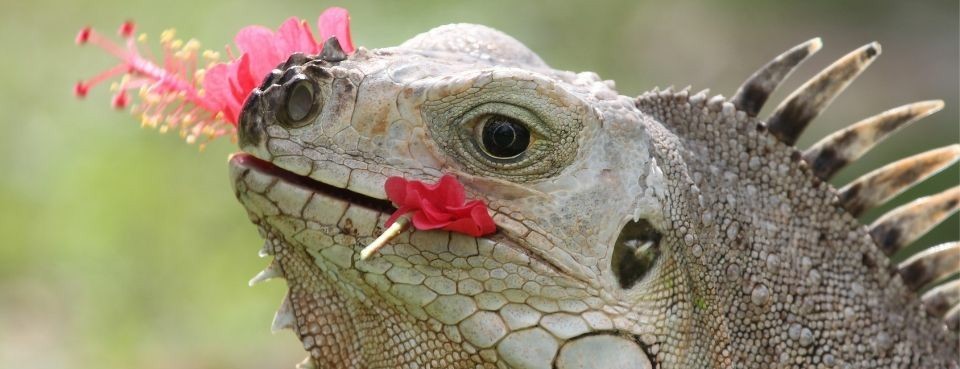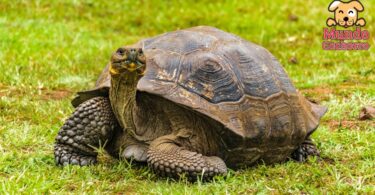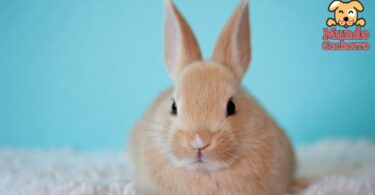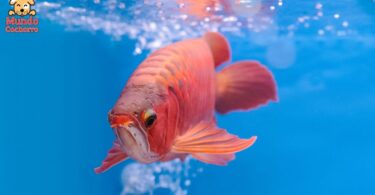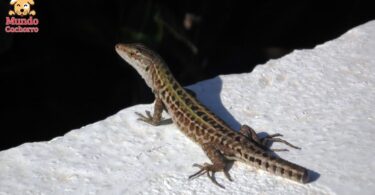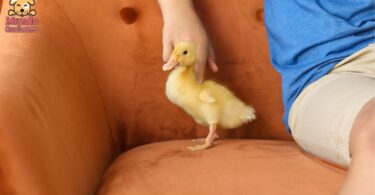The beauty and unique appearance of iguanas, reminiscent of dinosaurs, has caused them to become increasingly popular in the pet world. As reptile pets, their presence is increasingly common in homes, but not always in the right way.
Due to misinformation and the fact that iguanas are not easy to care for, many of them lack a proper place to live and a balanced diet that allows them to live healthily, triggering in most cases health problems related mainly to metabolic bone disease, one of the most common health complications in iguanas.
To provide the iguana with the care it deserves and thus ensure its well-being, the person in charge must comply with a series of vital elements for the animal’s life, starting with food. So, what do iguanas feed on?
Iguana feeding
Iguanas are herbivorous animals, which fall into the classifications of frugivores and folivores, that is, their diet is essentially composed of plants, leaves, weeds, flowers, fruits and vegetables. Some juveniles and subspecies, such as the black iguana, eat insects and other animal components in the wild; however, this occurs very rarely and as a way to find nutrients when there is a shortage in their normal diet.
Feeding an iguana in captivity should resemble as closely as possible its natural diet, making sure that there is always variety in what it is given and that it meets its nutritional needs. The food given should not be contaminated or contain chemicals, as this can seriously affect the reptile.
In the iguana’s diet, vegetables and leaves should be the main element, while fruits should form only 10-15% of its diet, on the other hand, special feed for iguanas, grains and cereals such as rice should have a presence of 5% or less. It is important to emphasize that some fruits, vegetables or leaves can only be given occasionally, once or twice a week and not in large quantities, such as spinach, lettuce and cauliflower.
The diet mainly includes alfalfa, chard, chard, shallots, zucchini, cilantro, tomatoes, apples, papaya, pumpkin, pear, okra, parsnips, melon and figs. In addition, carrots, watercress, romaine lettuce, watermelon and bean sprouts can be added sporadically to your diet. Plants, flowers and weeds that can be given include dandelion, alfalfa, ribwort, bittercress, clovers, mallow and mustard hedge.
The most common flowers used to feed iguanas are hibiscus, rose, nasturtium, dahlia, lilac, snapdragon, apple blossom, lavender and chrysanthemum. Leaves and weeds, provided they are not contaminated, include nettles, birch leaves, beech leaves, hazel leaves, hawkbit, chickweed, sowthistle and creepers.
What foods should not be given to iguanas?
The diet of iguanas should be strictly herbivorous if possible, so animal foods, including insects and fish, are not allowed. This is mainly because iguanas are not able to digest meat, and the effort the organism must make to pass it can leave permanent damage to the animal’s organs. Apart from this, citrus fruits such as oranges and kiwi, peas with pods, garlic, onions and beans should be avoided. Rhubarb is highly toxic to them and should not be given to them under any circumstances.
Image courtesy of (www.exoticdirect.co.uk), all rights reserved.


